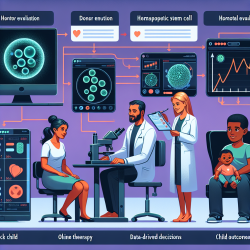Harnessing the Power of Policy: A Framework for Obesity Prevention
In the quest to combat obesity, practitioners often find themselves at a crossroads, seeking effective interventions that extend beyond individual behaviors. The research article, "An Evaluation Framework for Obesity Prevention Policy Interventions," offers a comprehensive framework that can guide practitioners in evaluating and implementing policy interventions aimed at obesity prevention. This blog will explore how practitioners can leverage this framework to enhance their skills and contribute to creating healthier environments for children.
The Need for Policy Interventions
Obesity has become a pressing public health issue in the United States, prompting a shift towards interventions that address environmental and policy changes. Individual-level interventions, while valuable, often fall short of achieving lasting success due to the pervasive influence of unhealthy environments. Public policies at federal, state, and local levels can play a pivotal role in transforming these environments, making them more conducive to healthy behaviors.
Understanding the Evaluation Framework
The framework presented in the research article is designed to equip public health practitioners with the tools needed to evaluate policy interventions effectively. Developed by the CDC-funded Center of Excellence for Training and Research Translation, this framework emphasizes the use of emergent logic models. These models evolve as a project progresses, allowing practitioners to adapt to the dynamic nature of policy-making processes.
Key Components of the Framework
- Inputs: These are the resources and contextual factors that support each step in the policy-making process. Practitioners should focus on aligning problems, solutions, and political factors to create a "window of opportunity" for new policies.
- Activities: Actions that engage and transform inputs to produce outputs and outcomes. Engaging stakeholders and advocating for change are crucial activities throughout the policy-making process.
- Outputs: These are the direct results of activities, including media coverage and evidence of stakeholder engagement. Evaluating the extent to which policies employ evidence-based approaches is essential.
- Outcomes: Desired and unanticipated results of a policy, ranging from short-term environmental changes to long-term population health outcomes.
Applying the Framework in Practice
Practitioners can utilize this framework to develop progressive logic models tailored to their specific policy initiatives. For instance, when evaluating a farm-to-school policy, practitioners can identify relevant inputs, activities, and outputs that align with the policy's goals. By continuously revising these models, practitioners can adapt to changes in the political and social environment, ensuring that their evaluations remain relevant and effective.
Challenges and Opportunities
While the framework provides a robust structure for policy evaluation, practitioners may encounter challenges such as engaging diverse stakeholders and navigating the complexities of policy-making. However, these challenges also present opportunities for collaboration and innovation. By fostering partnerships and leveraging the framework's tools, practitioners can contribute to the growing body of evidence-based obesity prevention strategies.
To delve deeper into the intricacies of this evaluation framework and its application, practitioners are encouraged to read the original research paper. It offers valuable insights and detailed guidance on implementing effective obesity prevention policies.
To read the original research paper, please follow this link: An Evaluation Framework for Obesity Prevention Policy Interventions.










